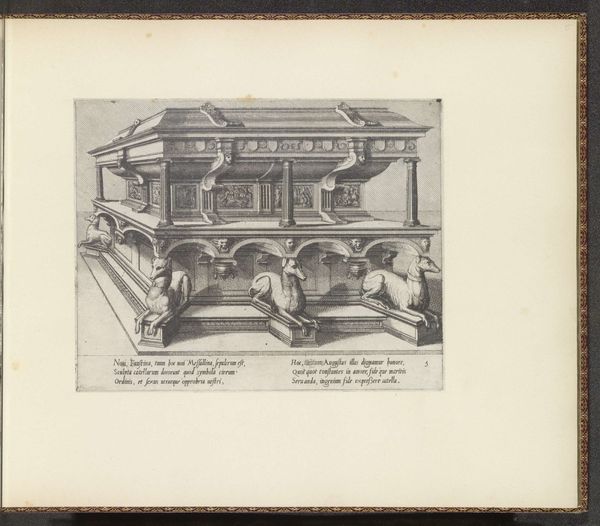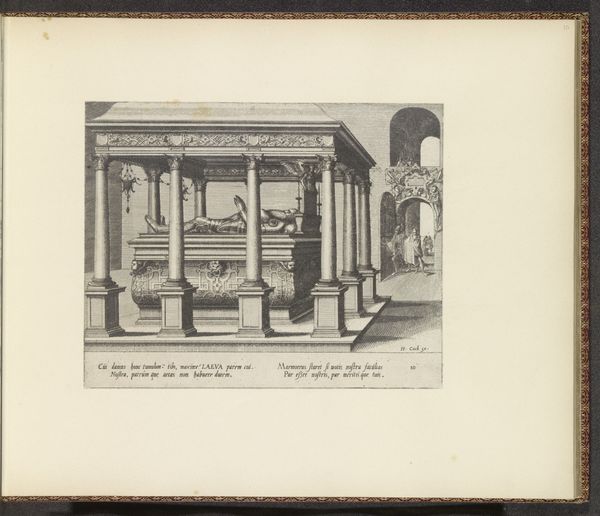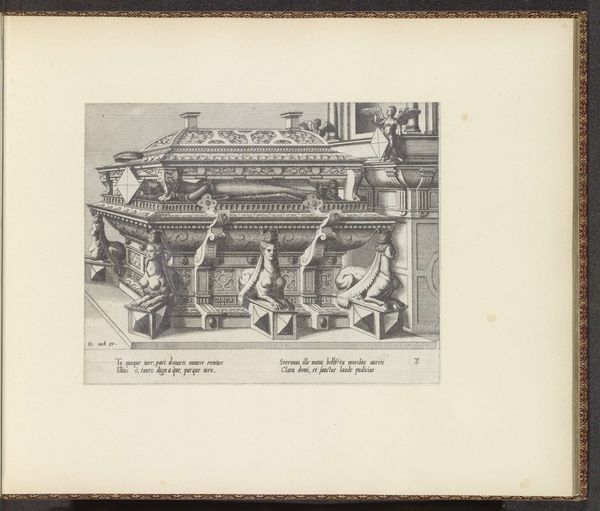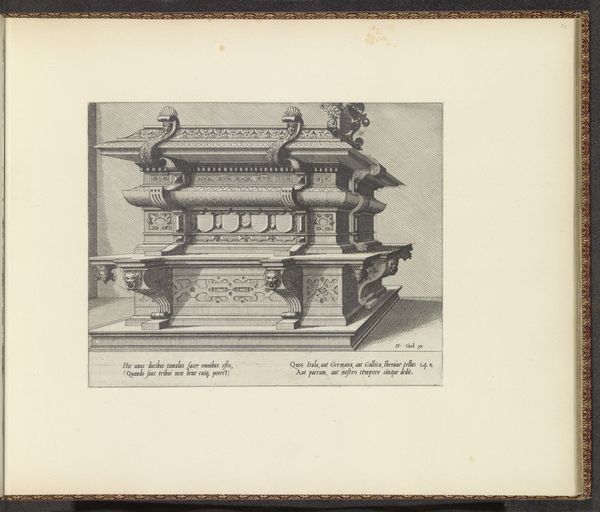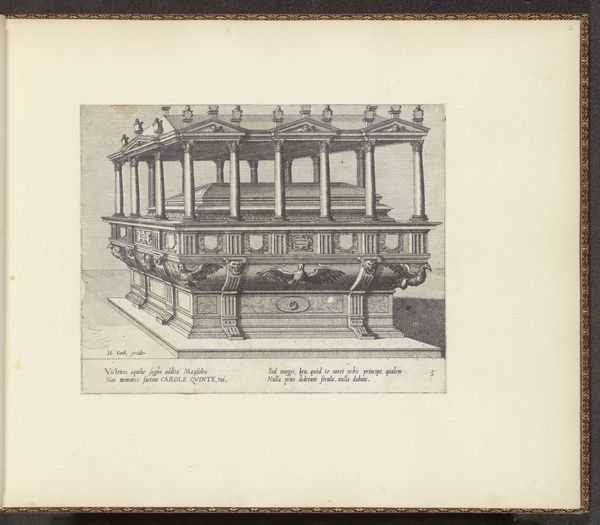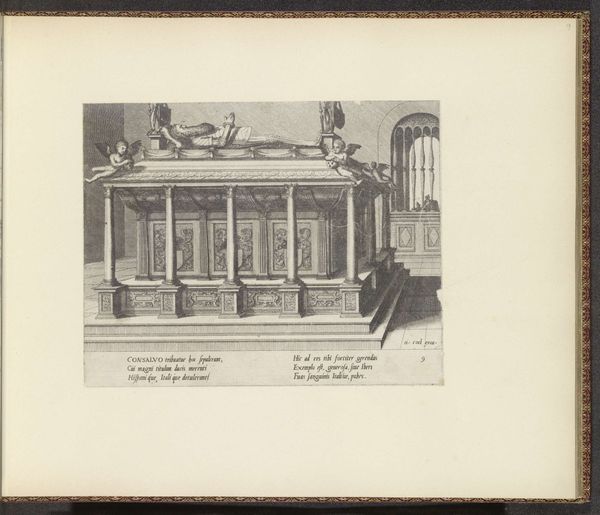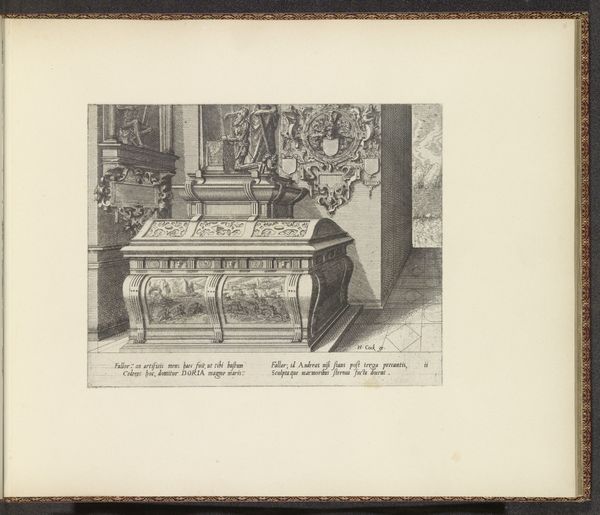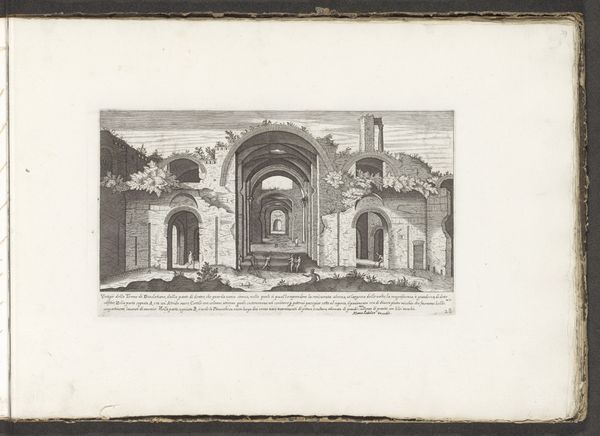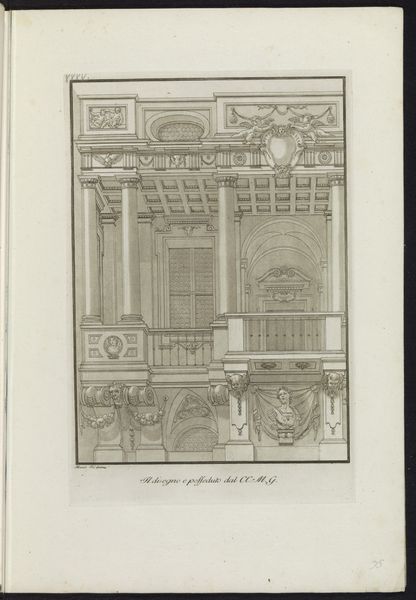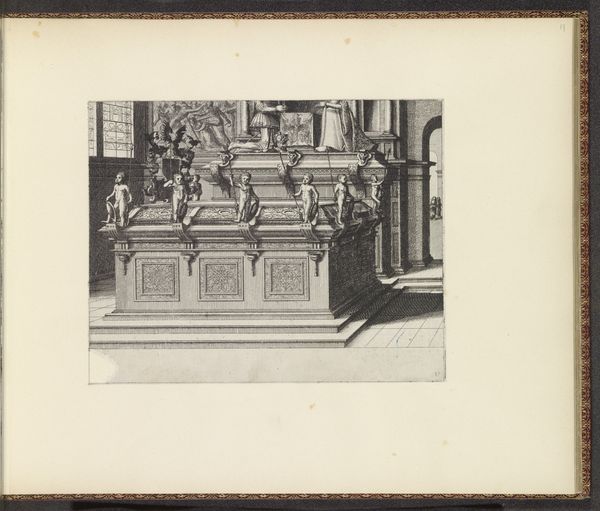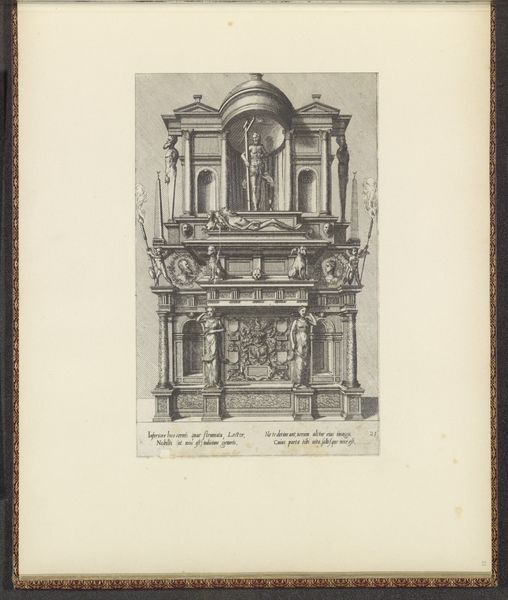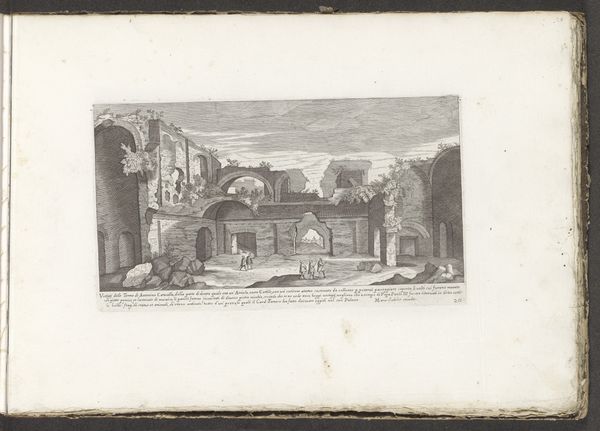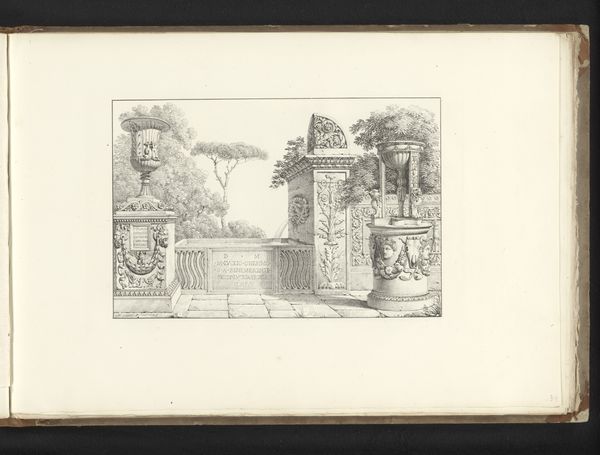
print, engraving, architecture
#
medieval
# print
#
engraving
#
architecture
Dimensions: height 167 mm, width 209 mm
Copyright: Rijks Museum: Open Domain
Editor: This engraving from 1563 by Johannes or Lucas van Doetechum is titled "Grave Monument for Antoine Perrenot." The stark black and white really emphasizes the structure's intricate details. It has a powerful presence to it. How do you interpret this work? Curator: I see this as a fascinating representation of power and identity in the 16th century. Funerary monuments weren't just about remembering the dead; they were carefully constructed statements about status and lineage. Consider who Antoine Perrenot was—a powerful clergyman and statesman. How does this architectural representation solidify his societal position, even in death? Editor: It definitely seems intentional in its scale and detail. It’s not just a marker; it's almost like a stage. Curator: Precisely. Think about the social and political climate of the time. The Church was a dominant force, and Perrenot was a key player. This monument served as a visual reminder of his influence. Look closely at the classical motifs – what might those allusions have communicated to contemporary viewers? Editor: I guess they were referencing a golden age and aligning Perrenot with that legacy. I also can't help but notice, despite all this grandeur, it's still a memorial of death. Curator: Exactly. The transience of life, juxtaposed with aspirations of permanence. Does that tension reveal any contradictions inherent in power structures? Perhaps thinking about mortality emphasizes the importance of legacy, and who gets to control that narrative. Editor: That makes a lot of sense. I’m seeing it as a narrative now, not just a still image, and one that raises questions about lasting impact and how it’s remembered. Curator: And by viewing it that way, we can perhaps view history with a bit more critical perspective.
Comments
No comments
Be the first to comment and join the conversation on the ultimate creative platform.
